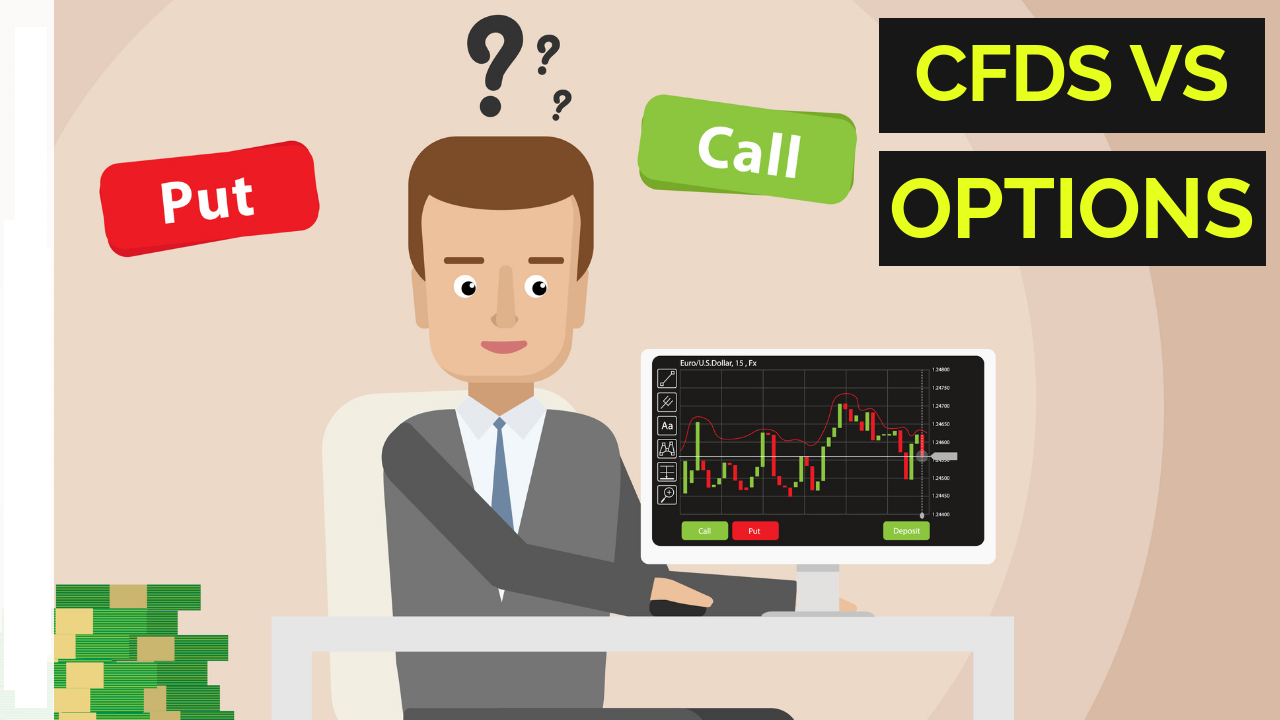Options and CFDs are both used as a type of derivative investment. They trade on a financial asset rather than the actual asset, allowing people to speculate on price movements without holding the underlying security(click to read more).
They share this attribute which makes them look very similar at first glance. However, there are significant differences between options and CFDs that you should be aware of before trading either instrument.
Risk and reward
The most significant difference is how they handle risk and reward: with an option, your maximum possible loss is known from the outset; it will happen if the option expires worthless (known as ‘out of the money). However, with a CFD, you could lose more than your initial deposit because leverage multiplies your losses (and potential profits too).
With options, the more it costs to buy them, the more money you have to make from selling them to break even. With CFDs, however, this relationship isn’t so straightforward. It’s because your broker will calculate your margin based on how much leverage they’re lending you. The cheaper the instrument you’re trading, the less margin they’ll require and vice versa.
How are options/CFDs traded?
Another big difference is how options are traded versus CFDs. Options are derivatives themselves – they derive their value from something else. They’re traded on an options market, separate from the markets where you would buy or sell securities themselves. By contrast, CFDs are cash-settled contracts between two parties directly – they aren’t traded on a secondary market.
Buyer and seller
Lastly, because of this direct link between the buyer and seller in a CFD contract, you can close out your position at any time before expiry to lock in a profit (or cut your losses). However, with an option, unless it’s exercised early, you’ll need to wait until expiry for it to be settled according to its specifications. If not exercised, there’ll usually be some form of settlement fee.
Options: Calls and puts
With both types of options, your maximum risk is known from the outset because of where the strike price sits relative to market value. It’s important not to forget this when trading because having limited risk doesn’t mean there’s no risk involved.
However, when trading CFDs, you’ll never know for sure how much money you could lose, even if your prediction is spot on. It’s because while the margin required will be based on the underlying security price, it’s not fixed during trading and therefore subject to change. Because leverage multiplies both losses and potential profits, there’s always a potential for huge losses.
Choosing between options and CFDs
If you’re willing to exercise early, buying options will usually require a larger initial deposit than CFDs because they have an expiry date associated with them. It means there can be some extra charges involved if you choose to go this route instead, so it needs careful consideration before deciding which way to go.
With a CFD, you can benefit from a big jump in price but don’t need to own the underlying security. For most people, this is going to make them preferable overall because you’ll be able to limit your potential losses by simply closing out that contract at any point before it expires. In addition, if the position moves deep into negative territory, then these contracts will automatically close themselves out, which means you’re safe from default risk.
In contrast, an option is only valid if its prediction comes true – and even with limited risk, there’s no guarantee of this happening. If you do go long on an option and its prediction turns out incorrect, not only will your initial investment be lost, but so will the funds required for settlement (i.e. the price you paid when purchasing it).
You can say goodbye to any potential profits from correctly predicting a rise in value and have instead locked in a potentially significant loss. In this sense, options are less flexible than CFDs which means you need to be sure of your prediction before going ahead with an options trade.



